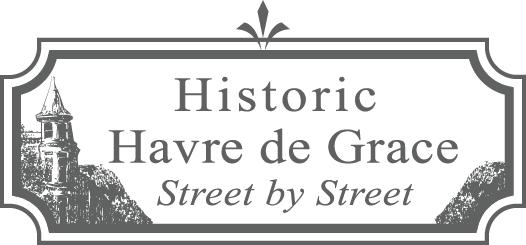Back to All Listings
101 North Union Avenue, c. 1854; rebuilt 1927
The land on which a house was built here in 1854 was part of a large parcel of land at the northeast corner of North Union and Congress Avenues previously owned by Captain William S. Boyd (and on which 453 Congress Avenue was built in 1840). When Lewis K. Herbst and his wife, Mina, bought the property (along with much of the adjacent land) in 1854, they built a duplicate house on this corner. This home was later bought by Stephen J. Seneca (1837-1918), who with his brother Robert Seneca owned the Seneca Cannery.
This address is listed as the residence of J. Swann Everist (1869-1920) in a 1916 telephone directory. While Everist in 1893 took over the large home furnishings store at St. John and Franklin Streets (formerly The Mammoth Store of Amos Spencer), in 1897 he executed a deed of trust to Oliver T. Rogers (a Justice of the Peace) to the benefit of his creditors. In 1914, he once more opened a home furnishings store at Union Avenue and Franklin Streets. His wife, LaBerta Pusey Everist (1869-1952) was a prominent women’s suffragist from 1912 to 1920 and participated in the Prairie Schooner Campaign to Baltimore. They both moved to Philadelphia in 1920.
In the early 1900s, the original house was home to some of the large Pennington family. Lee Roberts Pennington, DDS (1864-1930) had his dental office here around 1898; an avid gunner, his nickname was “Duck.” He lived here with his wife, Mary Lareine Hulett Pennington (1871-1946) and their two sons who served in WWI.
Lee Roberts Pennington, Jr. was born in 1894 and resided here in 1917 when he enlisted for WWI. He was made 1st Lieutenant in May 1919 and served in the 60th Infantry Machine Gun Company. He was overseas from April 1918 to July 1919, during which he was wounded in November 1918. 1st Lt. Pennington earned a 9th Infantry Brigade Citation for Gallantry in Action. He is listed on the Roll of Honor at Tydings Park. His wife was Catherine Espey Carter Pennington (1894-1984).
Lee’s younger brother, James “Norman” Pennington, also lived here when he enlisted for WWI in June 1917. He served as an electrician and went to his receiving ship station at Philadelphia in June 1917. He was sent to Naval Radio School in Massachusetts and then Naval Air Station, France, from May 1918 to November 1918. He became inactive on February 28, 1919, and also is listed on the Roll of Honor at Tydings Park.
After Stephen Seneca’s death in 1918, his widow Anne E. Seneca donated the 1854 house to be used as a parsonage for the new United Methodist Church across the street. The original house was razed and construction began for this house in May 1927. The contractor, “Jackson & Borneman,” completed the building by that autumn. This home on the northeast corner now belongs to the United Methodist Church and still serves as the parsonage for the pastor and family.
The parsonage was renovated between 2009 and 2011, with the beautiful craftsman-style woodwork preserved, including the dark wood inlaid floor borders. As with most parsonages in the past, the front room was used for informal weddings. The side room was sometimes used as an office for the pastor; now it is used as a breakfast room.
County Records
Built 1930. 2338 sq ft, 2 baths, basement, attached garage. Exempt commercial.
Built 1930. 2338 sq ft, 2 baths, basement, attached garage. Exempt commercial.
